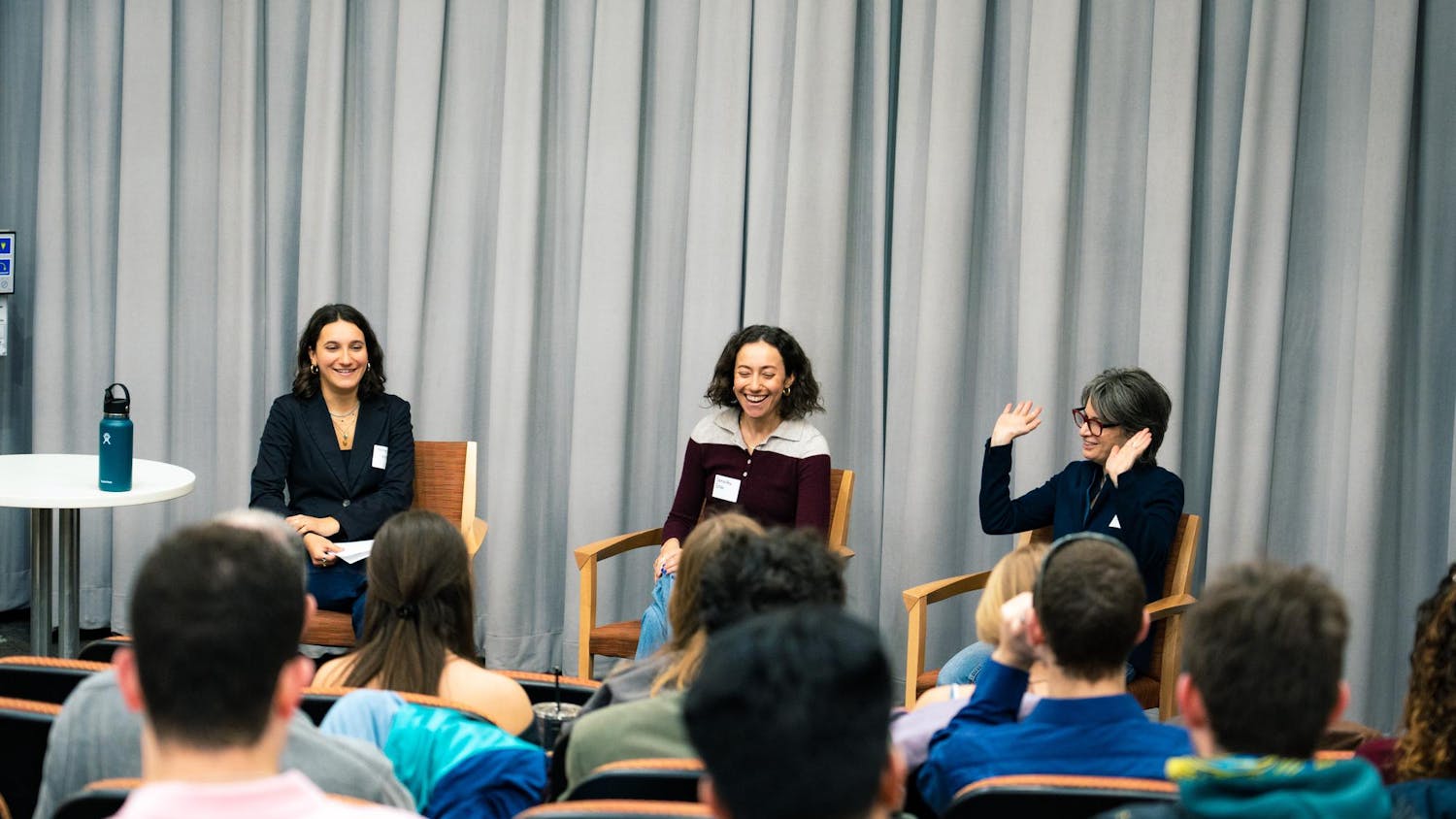In the once-empty field across from South Hall, an entire building was erected over the summer. It's not hard to miss. On the weekends, people surround the building, moving things around, finishing up the flooring inside or measuring and taking notes on its dimensions.
This flurry of activity is just another day's work on the Curio House, a collaborative project between the Boston Architectural College (BAC) and Tufts. Tufts students from the School of Engineering and the Urban and Environmental Policy and Planning (UEP) Program have worked with students from the BAC for almost two years to create an environmentally-friendly, relatively affordable house. Soon, the preparations will be over and the entire building will depart for Washington, D.C. to compete in the Solar Decathlon.
The Solar Decathlon is hosted every two years by the Department of Energy and is a competition in which 20 teams compete in 10 contests to see who has built the most attractive and energy-efficient solar-powered house. These contests judge both subjective elements like architecture, market viability and lighting design, as well as objective components like hot water, home entertainment and comfort zones.
Participants from BAC and Tufts wanted their house to look good on the outside, have all the modern technology a green house should have and still be affordable for a small family. The design of the house is an L-shaped shell with a deck that extends through the interior and connects the house to the outdoors.
The house features solar panels on the roof to provide energy and hot water for the residents. There is also a garden to encourage urban/suburban food sustainability and a device to catch storm water for reuse.
While the Solar Decathlon is mainly an architectural and engineering competition, the house's designers also focused on making the house accessible for people to live in. They also wanted to make it more affordable than last year's winner.
UEP graduate student Benjamin Steinberg, the head of the project's Policy Committee which organized Curio House construction, explained that last year's winner was a house that would cost $1.2 million on the market, but somehow won the market viability contest.
"We just wanted to know how they could have won that competition," Steinberg said. "This year they made the rules for that category a lot more strict. It's not just about writing a beautiful essay anymore; it's about proving how it's market viable."
Steinberg admitted that the Curio House team didn't fully meet their goal of affordability because most housing projects are subsidized in part by the government. He estimated that the house would cost around $350,000 on the market today.
In true Tufts fashion, students working on the Curio House tried to engage in community outreach through the YouthBuild Boston program. The program facilitated young students visiting the site in order to learn about green design and sustainability for an eight-week course. They were shown the basics of construction using the Curio House as an example, and the students even got to design their own house at the end of the course.
The Policy Committee also focused on teaching others how to live a more sustainable lifestyle on a day-to-day basis, despite the limitations of living in an urban or suburban area.
"We wanted to think about ways that we can inspire people to do things in their own house," Steinberg said.
The collaboration between the schools allowed for all areas of the house to be deeply explored, without one area getting more attention than the other. Head of the project's Engineering Committee, senior Matthew Thoms, explained that the hardest part of the project was getting everyone to compromise to achieve the ultimate design vision for all three major parties involved.
"The biggest difficulty is working with a lot of different people from very different backgrounds," Thoms said. "There's a lot of trying to keep in sync and catching up and staying on the same page."
Steinberg agreed with Thoms that the only real difficulty was coming up with a coherent vision that fit everyone's wishes.
"In anything you do in life, any good work in an integrated fashion takes a lot of time to gain trust, respect and understanding for how people think and work," Steinberg said.
Steinberg added that the final result was a "concept that was really universal." The design of the Curio House is meant to be used in as many forms as possible in the future.
"It's adaptable for different types of people based on means, preferences and lifestyles," Steinberg said. "If you need it to be affordable, then you can take away some of the fancy technologies. It could be used as apartments, as townhouses, as anything, really."





